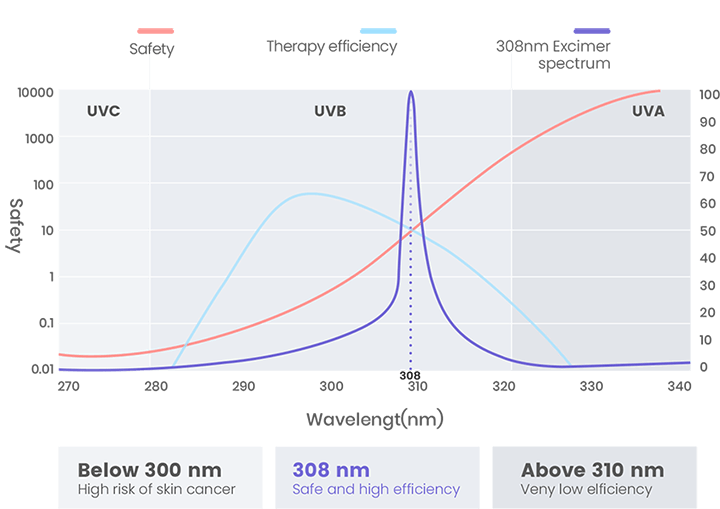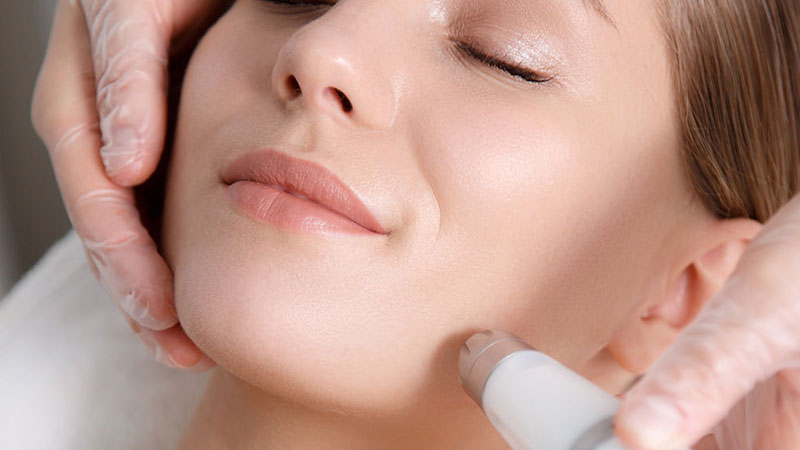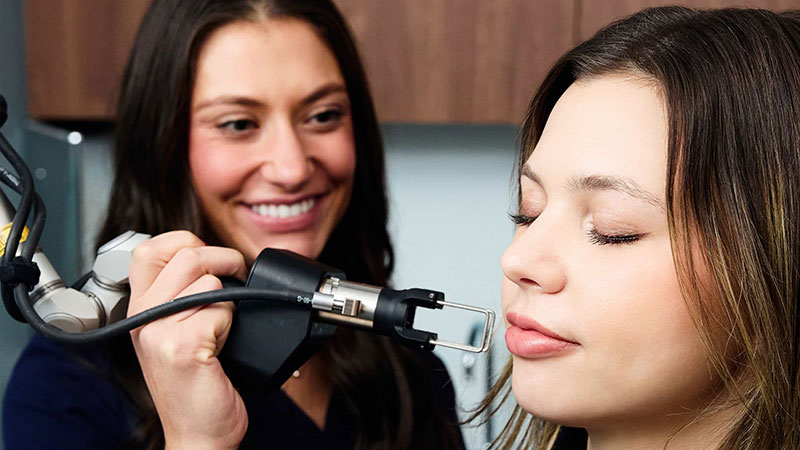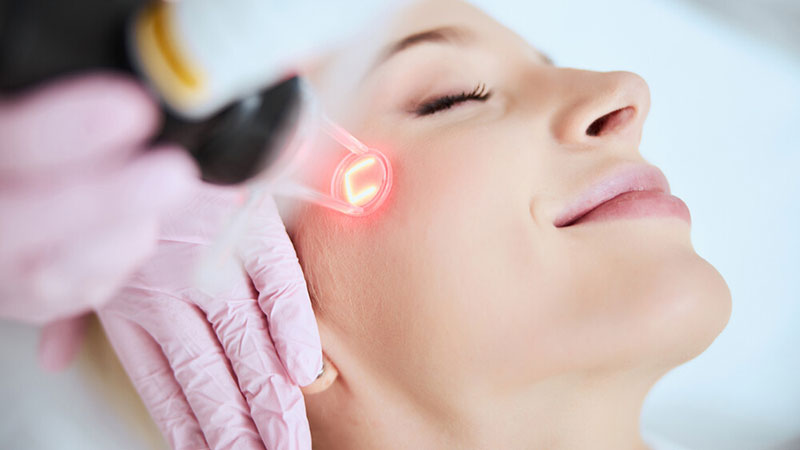The UV region covers the wavelength range of 100-400 nm and is divided into three bands:
- UVA (315-400 nm)
- UVB (280-315 nm)
- UVC (100-280 nm).
The excimer light uses a noble gas (Xenon) that decomposes in the presence of another reactive gas (Chloride), emitting UV radiation at a wavelength of 308 nm. When electrically excited, the gas mixture emits a monochromatic wavelength laser beam (308 nm), making exact, minute changes to irradiated material.

| Aspect | Light Type | Energy Output | Precision | Cost |
|---|---|---|---|---|
| NB-UVB | Narrowband UV-B 311-313nm | Moderate | Moderate | Cheaper |
| NB-UVB | Monochromatic 308nm | High | Localized | Moderate |
| 308nm Excimer Laser | Monochromatic 308nm | Very High | Highly localized | High |
In dermatology, effective treatment for various skin conditions, particularly those related to immune dysfunction or inflammation, has greatly benefited from the use of targeted light therapies. Among the most commonly used methods are NB-UVB light, 308 excimer light, and 308 excimer laser. Each of these therapies offers unique advantages in the treatment of skin disorders such as psoriasis, eczema, vitiligo, and atopic dermatitis.
NB-UVB Light
Narrowband UVB (NB-UVB) light, specifically in the 311-313 nm wavelength range, is a highly effective form of ultraviolet light used to treat several dermatological conditions. It works by penetrating the skin’s surface, triggering cellular responses that can reduce inflammation and promote healing. NB-UVB light therapy is commonly used for conditions like psoriasis and vitiligo, as it helps suppress the overactive immune responses that contribute to these disorders. It is considered a safer alternative to broadband UVB due to its narrower spectrum, which reduces the risk of skin damage and side effects.
308 Excimer Light (308 LED)
The 308 excimer light is a more focused and targeted form of UV therapy, emitting UVB light at 308 nm. This precise wavelength makes it highly effective for treating localized areas of skin. The 308 excimer light is used for a variety of skin conditions, including psoriasis, vitiligo, and atopic dermatitis. Its advantage over standard NB-UVB is its ability to target smaller, specific patches of skin with minimal exposure to surrounding healthy tissue. This focused treatment helps reduce the total amount of UV exposure while achieving a high therapeutic effect.
308 Excimer Laser
The 308 excimer laser is a more advanced version of excimer light therapy. Unlike excimer light, which uses a broad light beam, the excimer laser delivers highly concentrated UVB light in a precise, controlled manner. It is especially useful for treating small, well-defined patches of skin affected by psoriasis or vitiligo. The excimer laser offers significant advantages in terms of precision, providing targeted treatment to affected areas with minimal collateral exposure. This makes it an excellent option for patients with localized conditions or those requiring spot treatment.
Conclusion
The 308 excimer lamp is smaller than the laser, it requires less space and has the advantage of portability. Both excimer laser and excimer lamps are more expensive than conventional NB-UVB phototherapy, and excimer laser is more expensive than excimer lamps and has higher operational and maintenance costs.






Leave A Comment